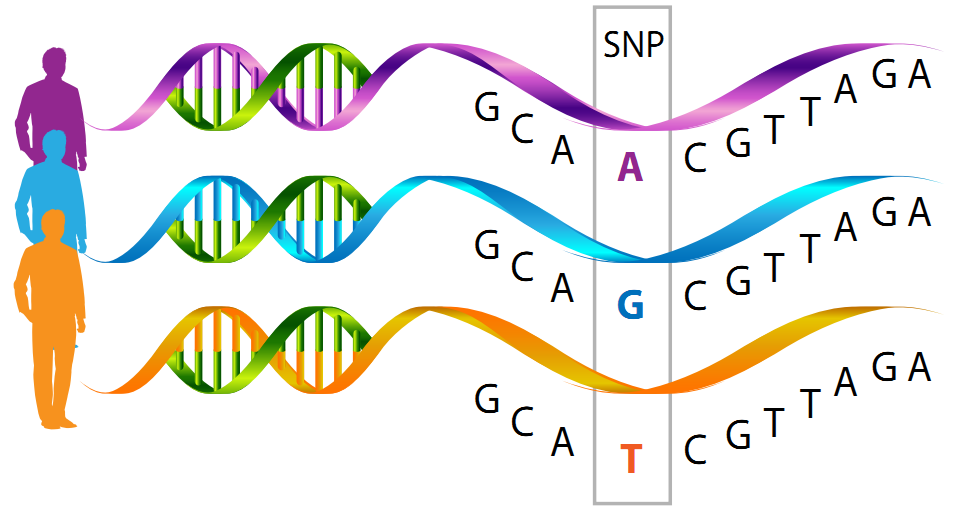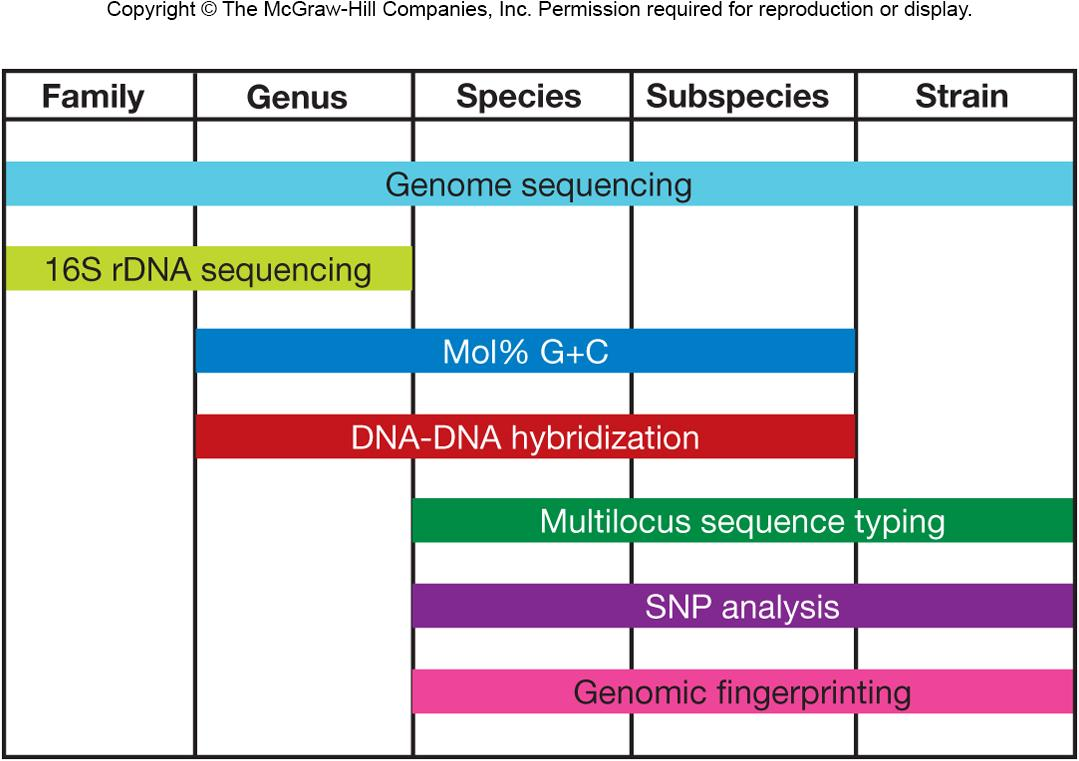L9.5 Microbial Taxonomy and the Evolution of Diversity
一、Introduction to Microbial Taxonomy
Taxonomy
- consists of three separate but interrelated parts
classification – arrangement of organisms into groups (taxa; s., taxon)
nomenclature – assignment of names to taxa
identification – determination of taxon to which an isolate belongs
Natural Classification 自然分类法
First classification in 18th century developed by Linnaeus
- based on anatomical(结构(上)的; 解剖的) characteristics
This approach to classification does not necessarily provide information on evolutionary relatedness
Polyphasic Taxonomy 多相分类法
Incorporates information from genetic, phenotypic, and phylogenetic analysis

Highest rank is domain
Bacteria and Archaea – microbes only
Eukarya – microbes and macroorganisms
Within domain
phylum, class, order, family, genus, species , epithet, some microbes have subspecies
- Domain 界
- Phylum 门
- Class 纲
- Order 目
- Family 科
- Genus 属
- Species 种
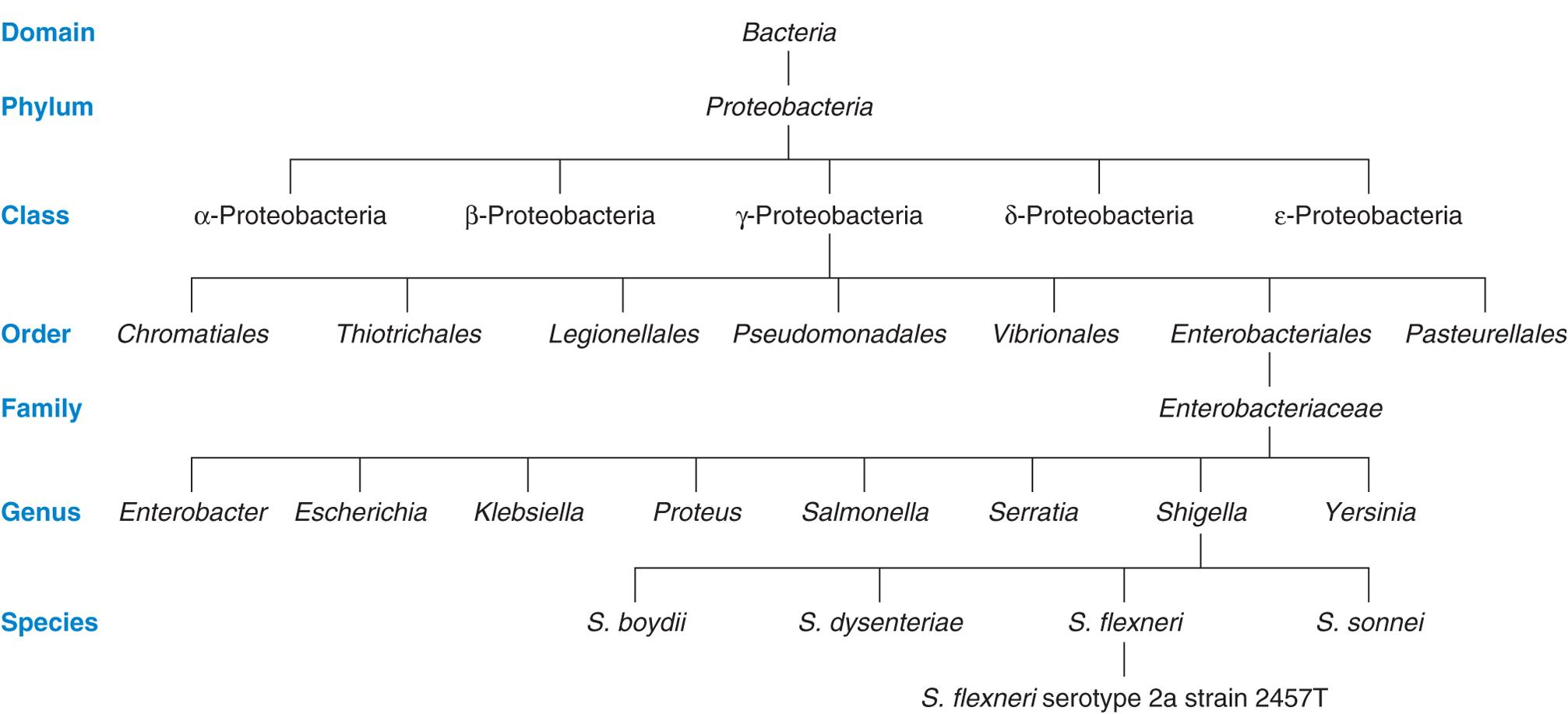
1. Species
Definition
collection of strains that share many stable properties and differ significantly from other groups of strains
Another definition also suggested as a definition of species is:
- collection of organisms that share the same sequences in their core housekeeping genes
Example: Escherichia coli
2. Strains 系
Descended from a single, pure microbial culture
Vary from each other in many ways
biovars(生物变型;生化变种) – differ biochemically and physiologically
morphovars(形态变型 ) – differ morphologically
serovars(血清变型) – differ in antigenic properties
Example:Escherichia coli K12
3. Type Strain 模式株,模式菌株
Usually one of first strains of a species studied
Often most fully characterized
Not necessarily most representative member of species
Example: Escherichia coli O1:K1:H7 U5/41
Binomial System of Nomenclature
Devised by Carolus Linnaeus
Each organism has two names:
genus name – italicized and capitalized (e.g., Escherichia)
species epithet( (表示性质、特征等的)词语) – italicized but not capitalized (e.g., coli)
Can be abbreviated after first use (e.g., E. coli)
A new species cannot be recognized until it has been published in the International Journal of Systematic and Evolutionary Microbiology
二、Techniques for Determining Microbial Taxonomy and Phylogeny
Classical characteristics
morphological
physiological
biochemical
ecological
genetic
1. morphological
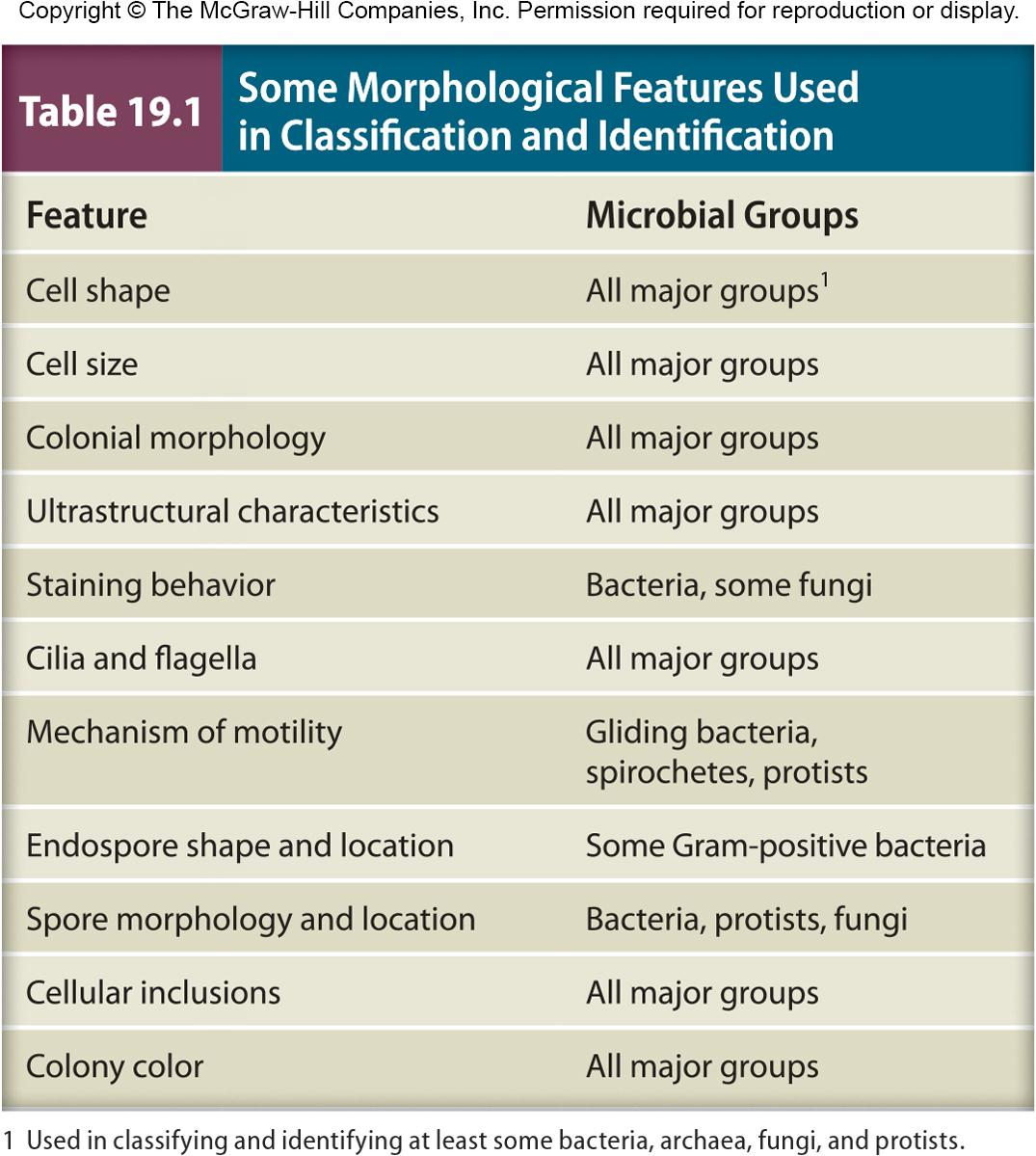
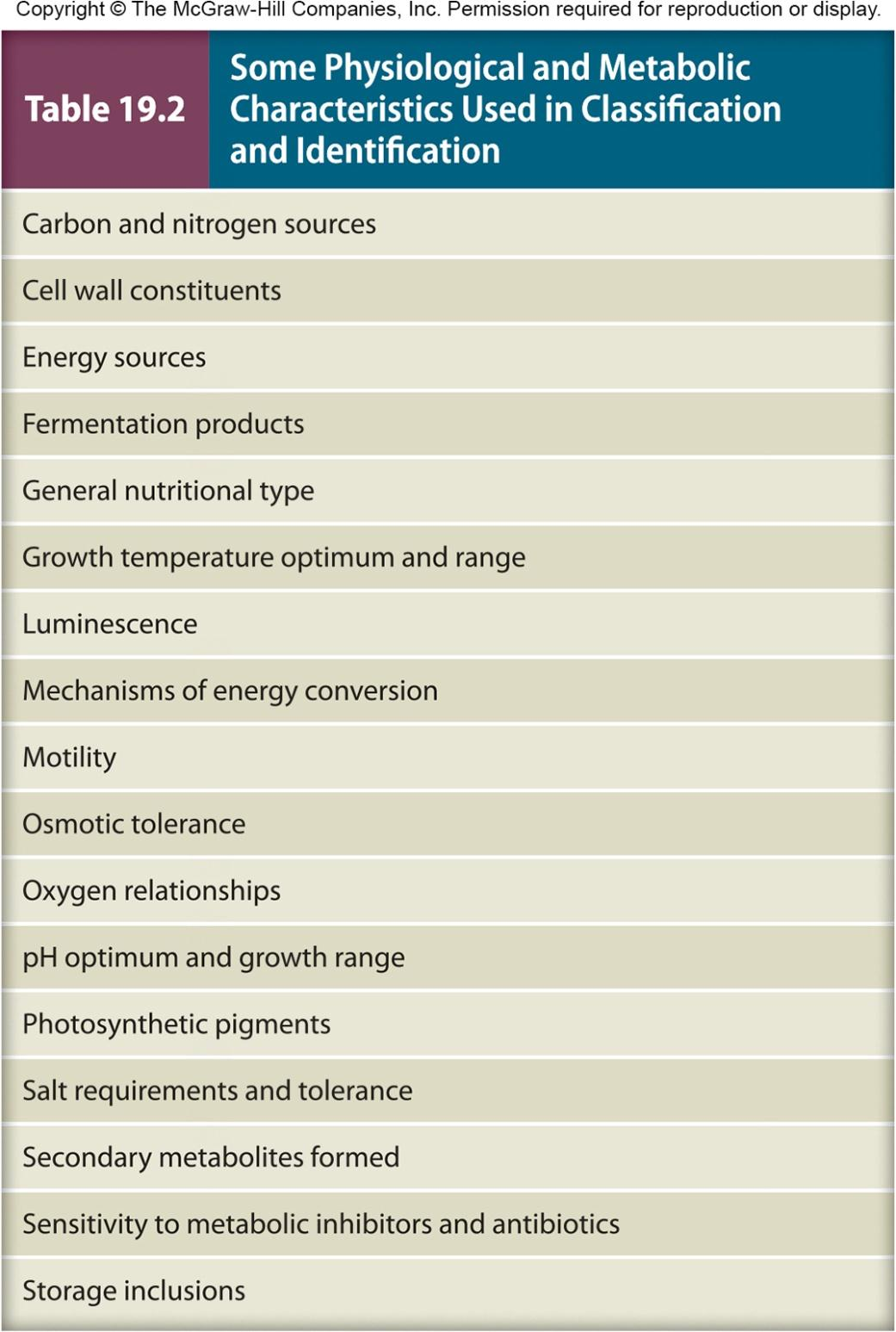
2. Ecological Characteristics
Life-cycle patterns
Symbiotic relationships
Ability to cause disease
Habitat preferences
Growth requirements
3. Molecular Characteristics
Nucleic acid base composition
Nucleic acid hybridization
Nucleic acid sequencing
Genomic fingerprinting
Amino acid sequencing
Nucleic Acid Base Composition
G + C content
Mol% G + C = (G + C) / (G + C + A + T) x 100
usually determined from melting temperature ($T_{m}$)
variation within a genus usually <10%
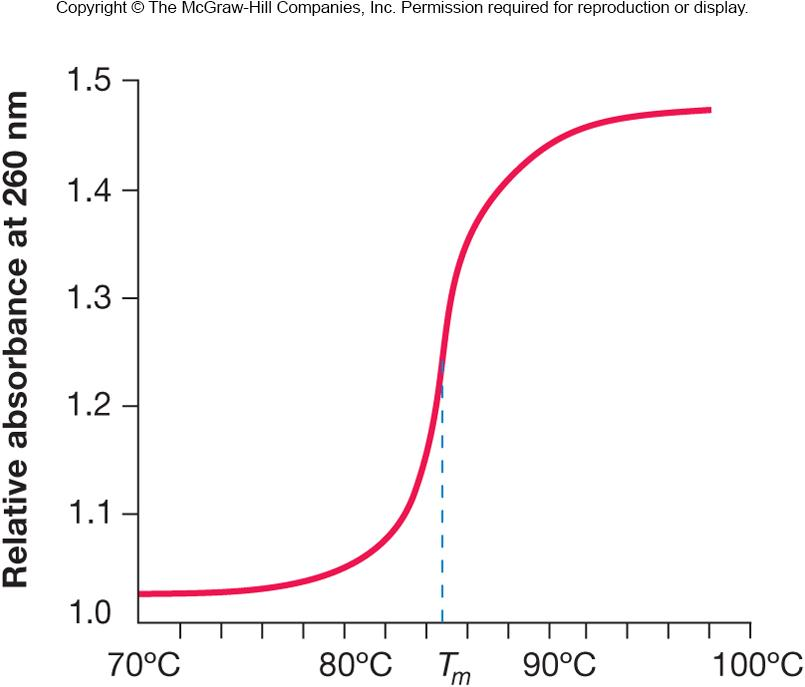
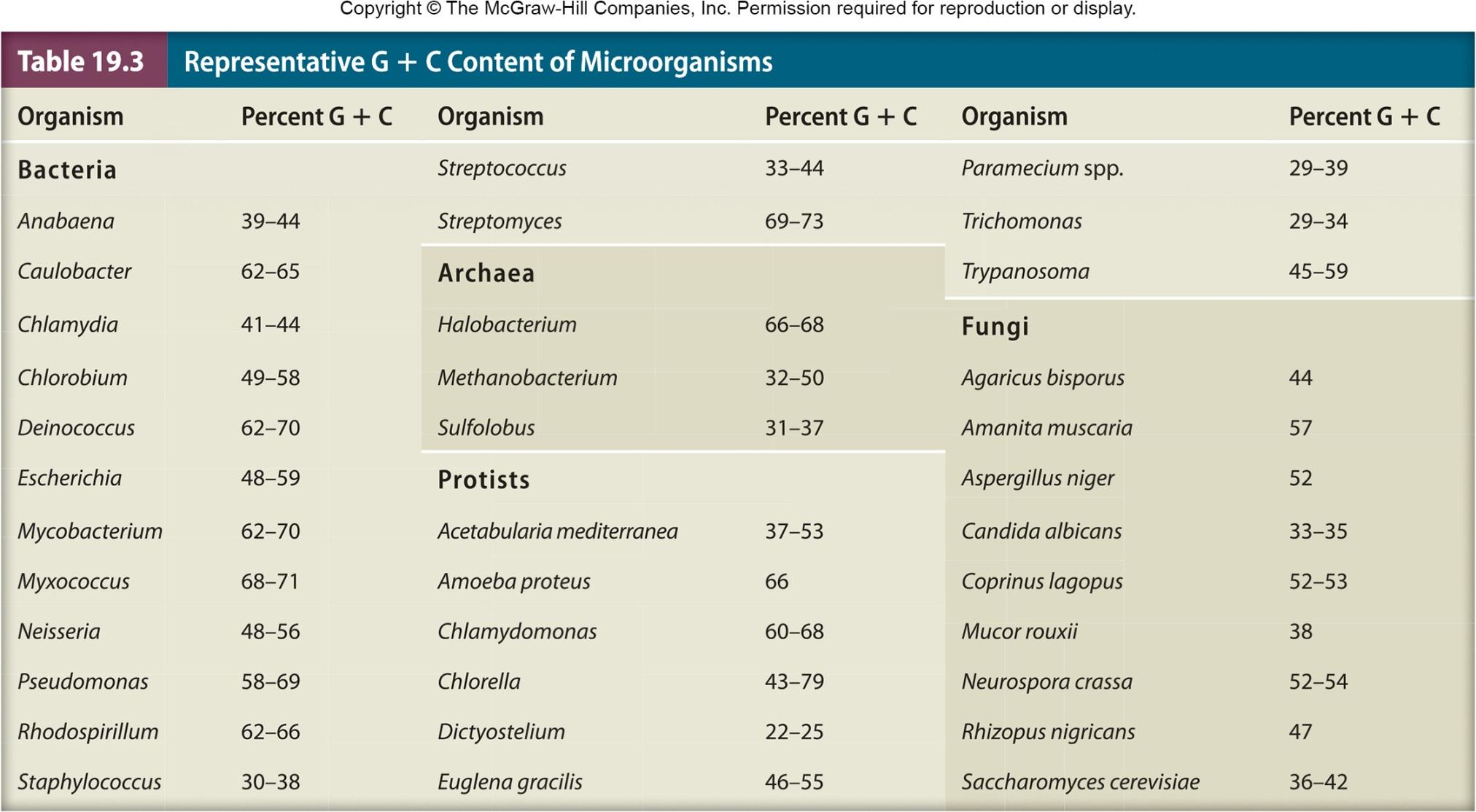
Nucleic Acid Hybridization
DNA-DNA hybridization
- measure of sequence homology
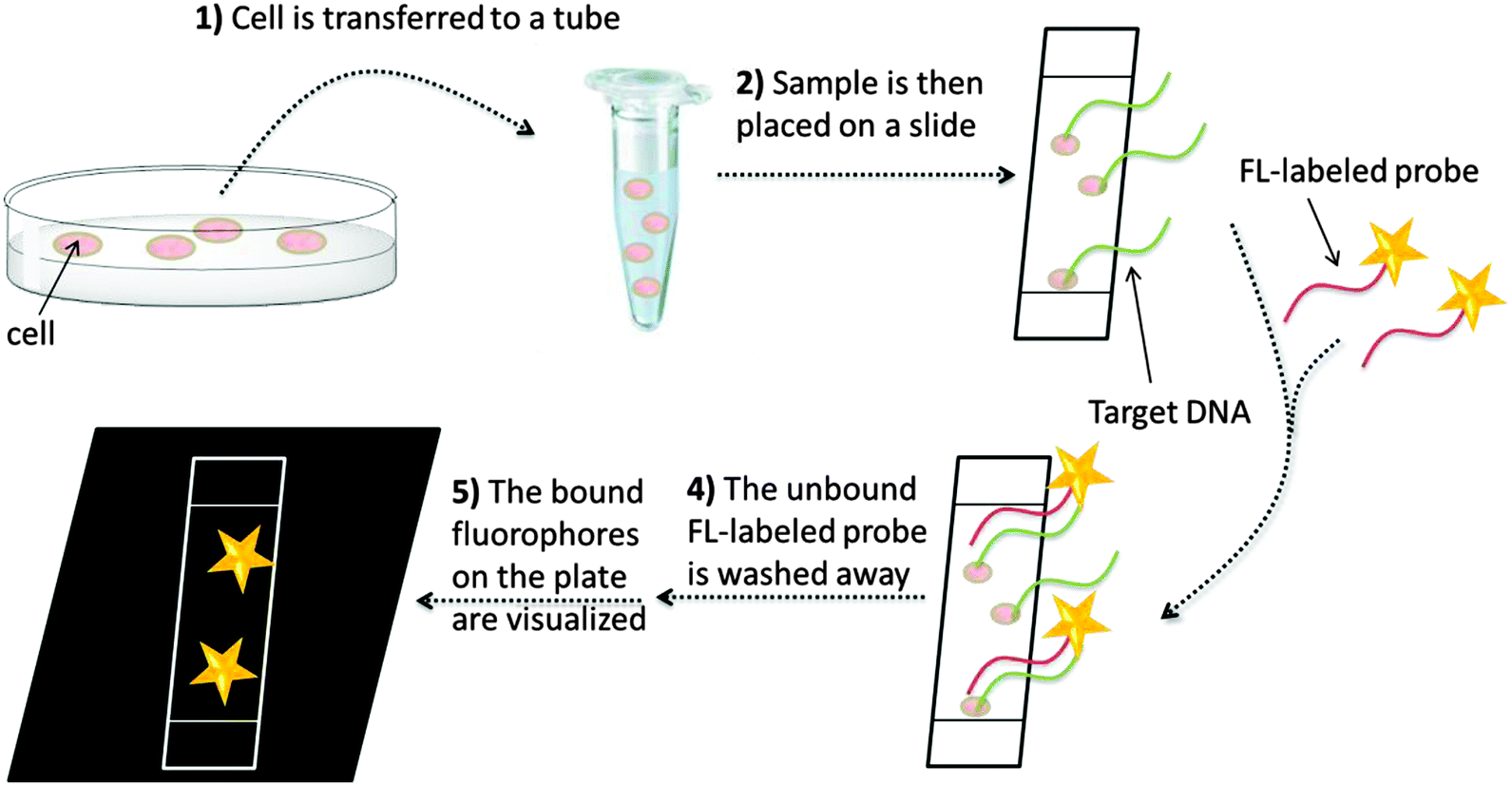
Nucleic Acid Sequencing
Small subunit rRNAs (SSU rRNAs)
16S and 18S rRNA
inferring microbial phylogenies and making taxonomic assignments at genus level
70% is cutoff value for species definition
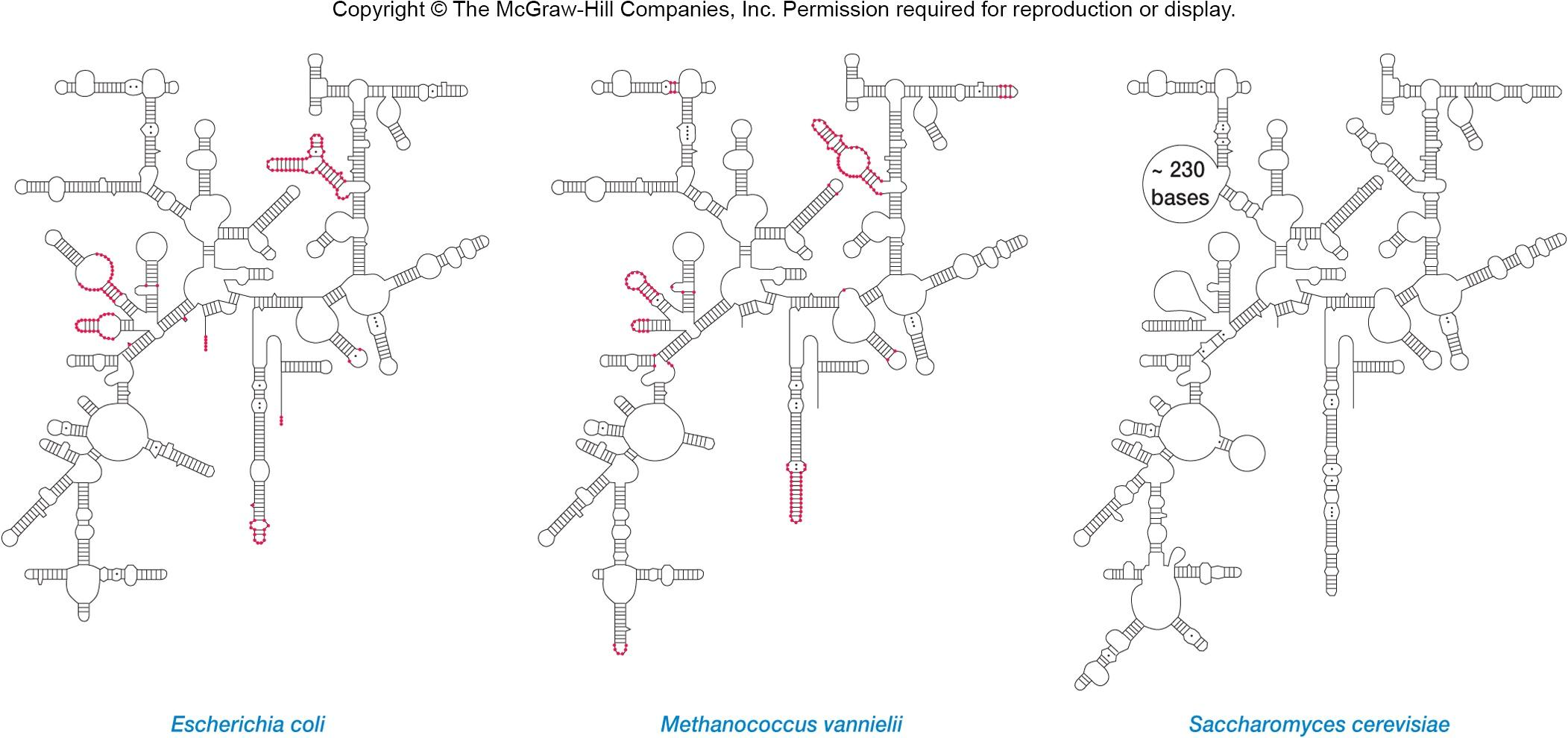
Genomic Fingerprinting 基因组指纹
Requires analysis of genes that evolve more quickly than rRNA encoding genes
(1) multilocus sequence analysis (MLSA,多位点序列分析 )
- the sequencing and comparison of 5 to 7 housekeeping genes is done to prevent misleading results from analysis of one gene
(2) Restriction Fragment Length Polymorphism (RFLP)
Uses restriction enzymes to recognize specific nucleotide sequences
- cleavage patterns are compared
Ribotyping
similarity between rRNA genes is determined by RFLP rather than sequencing
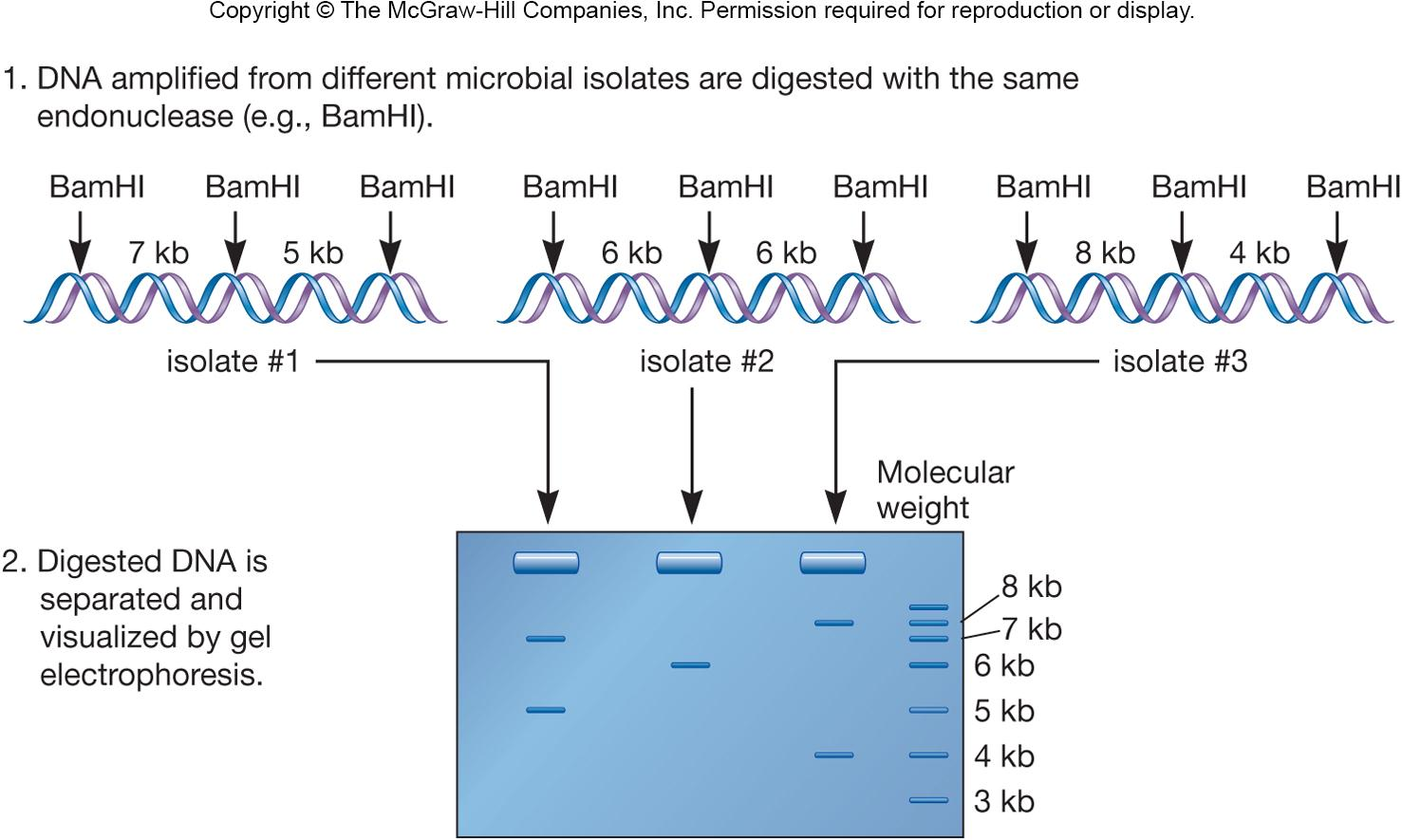
(3) Single Nucleotide Polymorphism (SNP)
Looks at single nucleotide changes, or polymorphisms, in specific genes
Regions targeted because they are normally conserved, so single changes in a base pair reveal evolutionary change
